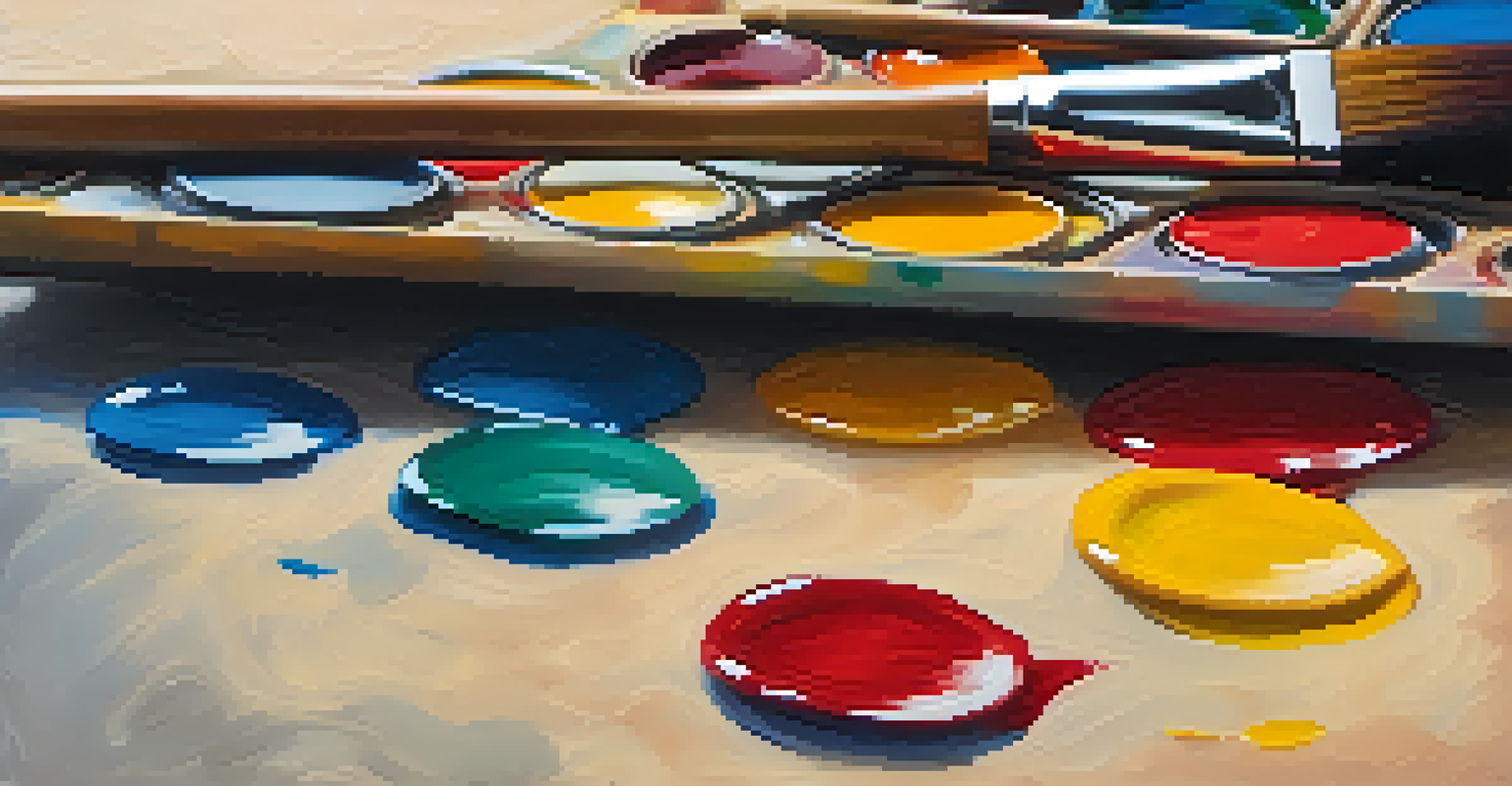The Role of Color Grading in Enhancing Film Mood and Tone

Understanding Color Grading and Its Importance
Color grading is the process of altering and enhancing the color of a film to create a specific mood or tone. It's a crucial step in post-production, where filmmakers fine-tune the visual experience. By adjusting colors, contrasts, and brightness, color grading can dramatically shift how viewers perceive the story.
Color is the keyboard, the eyes are the harmonies, the soul is the piano with many strings.
Think of color grading as the makeup artist for a film. Just as makeup enhances features and conveys emotions, color grading adds depth and feeling to each scene. It helps to establish a film's atmosphere, making it more immersive and engaging for the audience.
Without effective color grading, a film might feel flat or disjointed, failing to evoke the intended emotional responses. Well-executed color grading can transport viewers into the story, guiding their feelings and reactions with every frame.
Setting the Mood: How Colors Influence Emotions
Colors have a profound impact on our emotions, and filmmakers harness this power to set the mood of their films. For instance, warm colors like reds and oranges can evoke feelings of passion or anger, while cooler tones like blues and greens often suggest calmness or sadness. This psychological effect of colors is a key tool in storytelling.

Imagine a romantic scene bathed in soft, golden hues—this warmth invites feelings of love and intimacy. Conversely, a scene drenched in cold blues might evoke loneliness or despair. By carefully selecting and grading colors, filmmakers can steer the audience's emotional journey.
Color Grading Sets Film's Mood
Color grading is essential in post-production, as it alters and enhances film colors to evoke specific emotions and create a desired atmosphere.
This emotional guidance isn’t just about aesthetics; it's an essential part of narrative development. When viewers feel a certain way, they connect more deeply with the characters and plot, enhancing the overall storytelling experience.
Creating Atmosphere Through Color Schemes
Color schemes play a vital role in establishing the atmosphere of a film. A cohesive and intentional color palette can unify scenes and enhance the overall narrative. For example, a film set in a dystopian future may use desaturated colors to reflect bleakness and despair.
Colors are the smiles of nature.
Take 'Mad Max: Fury Road' as an example. The film uses a striking palette of oranges and blues to create a stark contrast between warmth and desolation, contributing to the film's frenetic energy. This not only captivates viewers but also reinforces the themes of survival and chaos.
In contrast, a fairy tale might employ vibrant colors to evoke a sense of wonder and magic. By thoughtfully selecting and grading colors, filmmakers can immerse the audience in the world they’ve created, making it feel rich and alive.
Symbolism in Color: Conveying Deeper Meanings
Color grading is not just about mood but also about symbolism. Different colors can represent various themes or ideas, adding layers of meaning to a film. For example, the color red often symbolizes love or danger, while green can represent jealousy or new beginnings.
In films like 'The Sixth Sense,' colors are used strategically to signify different states of being. The use of red throughout the film subtly signals the presence of the supernatural, guiding the audience's understanding without explicit exposition.
Symbols Deepen Film's Narrative
Colors in films often carry symbolic meanings, allowing filmmakers to convey complex themes and enhance storytelling through visual cues.
This symbolic approach to color grading allows filmmakers to communicate complex ideas visually. By integrating color symbolism, they can create a richer narrative that resonates with viewers on multiple levels.
Color Grading Techniques: Tools of the Trade
Filmmakers use various color grading techniques to achieve their desired effects. Tools like color wheels, curves, and LUTs (Look-Up Tables) allow for precise adjustments to hue, saturation, and light. These techniques are crucial for achieving the right mood and tone for each scene.
For example, by manipulating shadows and highlights, a filmmaker can create a more dramatic effect, enhancing tension in a thriller. In a romantic comedy, softer pastel colors might be used to create a light-hearted and whimsical feel.
The choice of technique often depends on the film's genre and the emotional response the filmmaker aims to evoke. With the right tools, they can craft a visual narrative that complements the story and resonates with the audience.
The Collaborative Nature of Color Grading
Color grading is a collaborative process involving various professionals, including directors, cinematographers, and colorists. Each brings their vision and expertise to ensure the final product aligns with the filmmaker's intent. This teamwork is essential for achieving a cohesive look.
During the grading process, directors communicate their emotional vision, while cinematographers provide input on how colors interact with lighting. Colorists then apply their technical skills to bring these ideas to life, fine-tuning the visuals to perfection.
Collaboration Shapes Visual Style
The color grading process is a collaborative effort among directors, cinematographers, and colorists, ensuring that the film's visuals align with its emotional intent.
This collaboration ensures that the color grading enhances the story rather than distract from it. When everyone is on the same page, the result is a beautifully crafted film that resonates with viewers on an emotional level.
The Future of Color Grading in Film
As technology advances, the future of color grading in film looks promising. New software and tools are continually being developed, allowing for more creative possibilities and finer control over the grading process. This evolution is exciting for filmmakers and audiences alike.
Emerging technologies such as AI and machine learning are beginning to play a role in color grading, potentially streamlining workflows and enhancing creativity. Imagine automated adjustments based on mood detection or audience preferences—this could revolutionize how films are colored.

Ultimately, the goal remains the same: to enhance storytelling through color. As filmmakers continue to explore new techniques and technologies, the impact of color grading on film mood and tone will undoubtedly grow, making it an even more integral part of the filmmaking process.